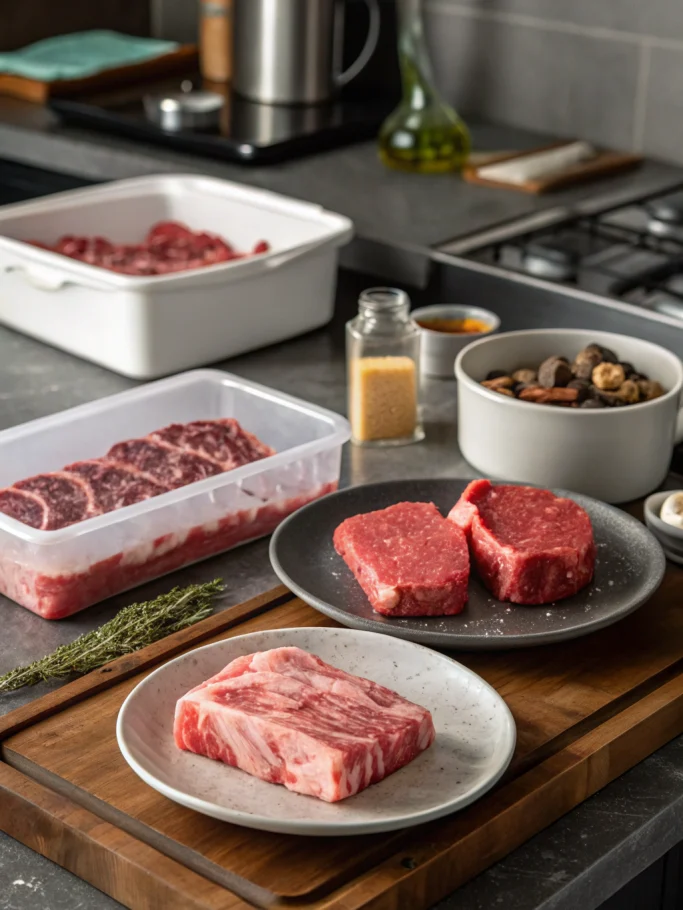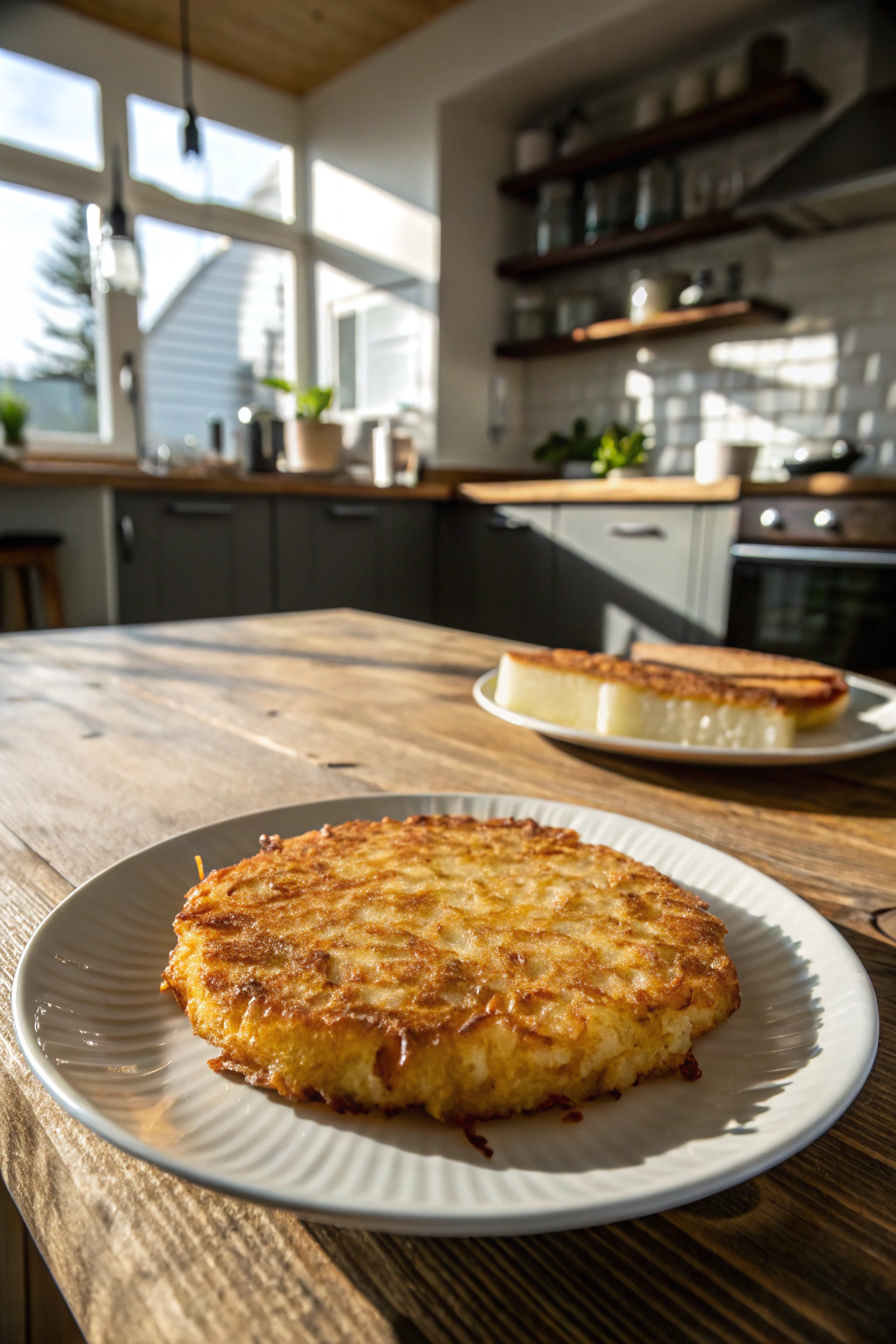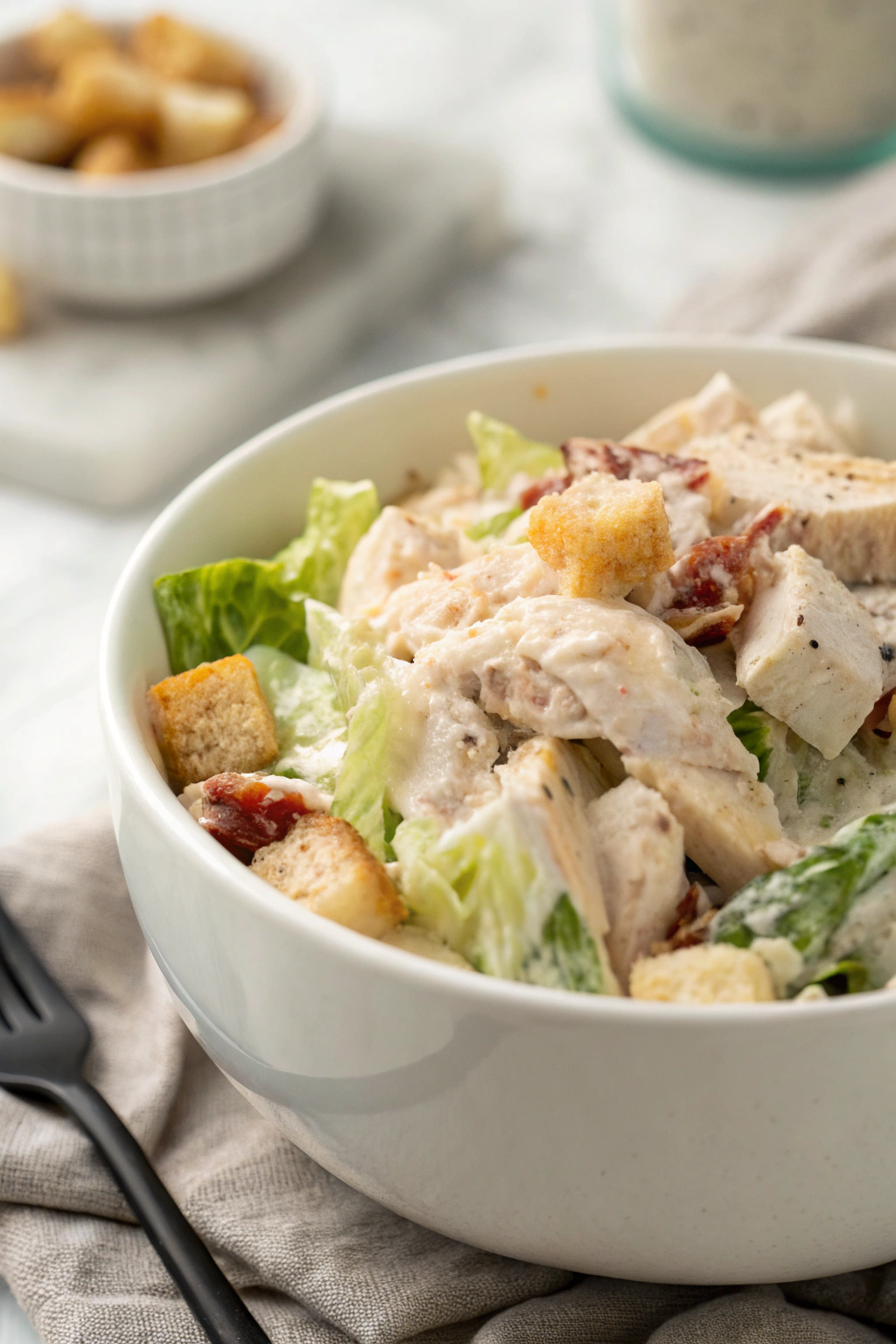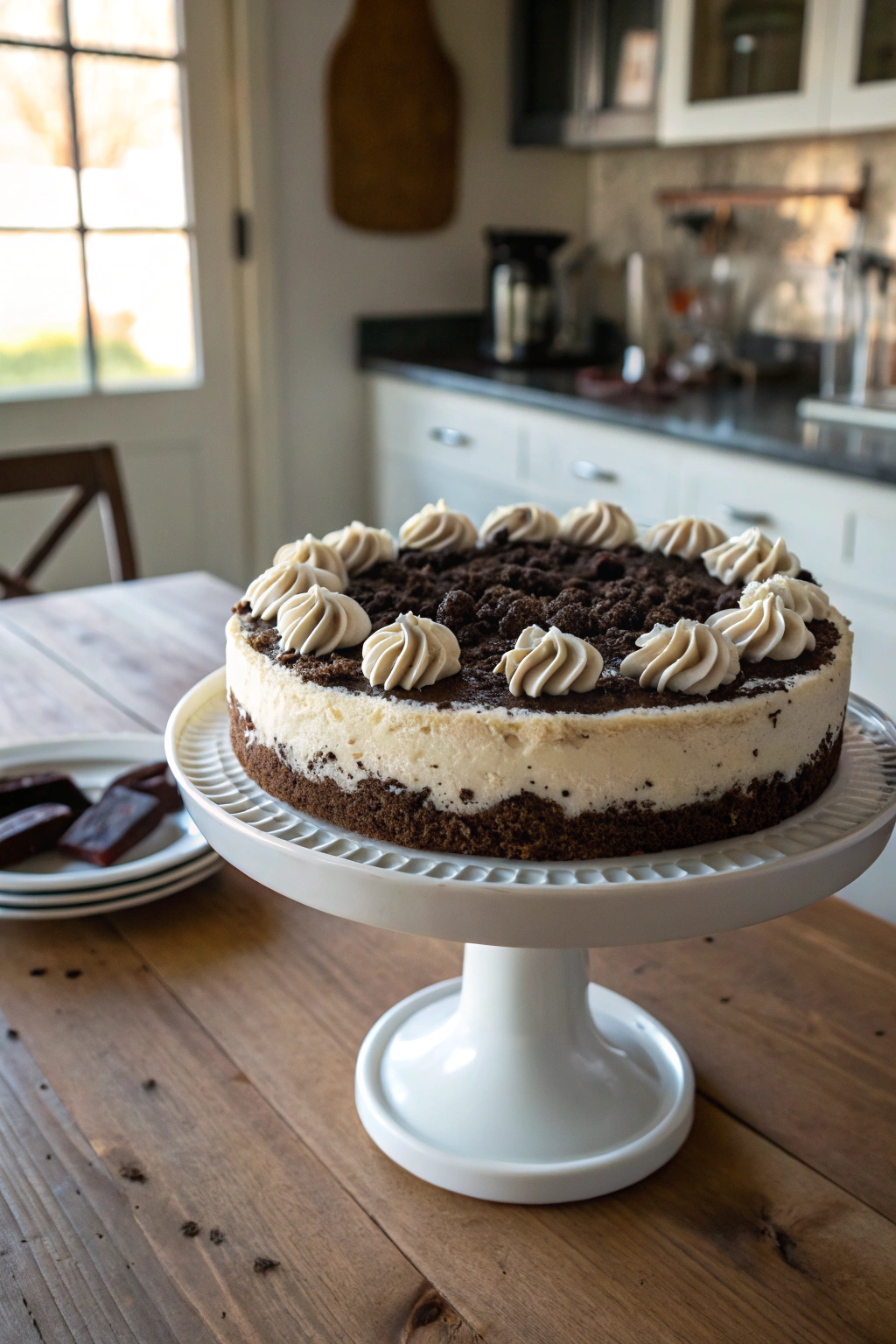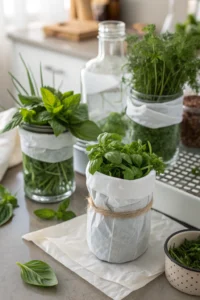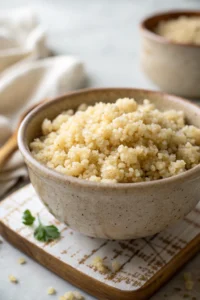Y’all, let me tell you about my biggest kitchen disaster last Thanksgiving! I completely forgot to defrost meat for our family dinner, and there I was at 6 AM, panicking over a rock-solid turkey. After that morning (and many frantic calls to my mom), I learned everything there is to know about properly thawing meat. These days, I’m pretty much the go-to person in my friend group for defrosting advice. Trust me, whether you’re dealing with chicken breasts for tonight’s dinner or a big roast for Sunday lunch, knowing how to safely thaw your proteins is super important. I’ve tested every method out there, and I’m sharing what actually works in real-life kitchens, not just fancy test labs!
Essential Safety Rules for Defrosting Meat
Temperature Danger Zones to Watch
Let’s talk about the scary stuff first – that tricky temperature zone between 40°F and 140°F where bacteria just love to party. When you defrost meat, you’ve got to keep it below 40°F the whole time. I learned this the hard way after leaving chicken on my counter all afternoon (big mistake!). Your fridge should be set at 37°F – I actually bought a cheap thermometer after my food safety wake-up call. Never, ever try to speed up defrosting meat by leaving it out at room temperature. Even though it might seem fine, bacteria can multiply like crazy in just two hours. Keep that meat cold and take your time – better safe than sorry!
Cross-Contamination Prevention Tips
Okay, here’s something that drives me nuts in cooking shows – they never show the cleanup! When you’re working with frozen meat, cross-contamination is a real concern. I always set up a dedicated defrosting zone in my fridge – bottom shelf only, folks! Place your meat in a deep dish or container to catch any drips (those takeout containers finally come in handy!). I keep a special cutting board just for raw meat, and I wash my hands like a surgeon – before, during, and after handling any meat. Remember to sanitize your counters and any tools that touched the meat. My rule of thumb? If it touched raw meat, it needs cleaning!
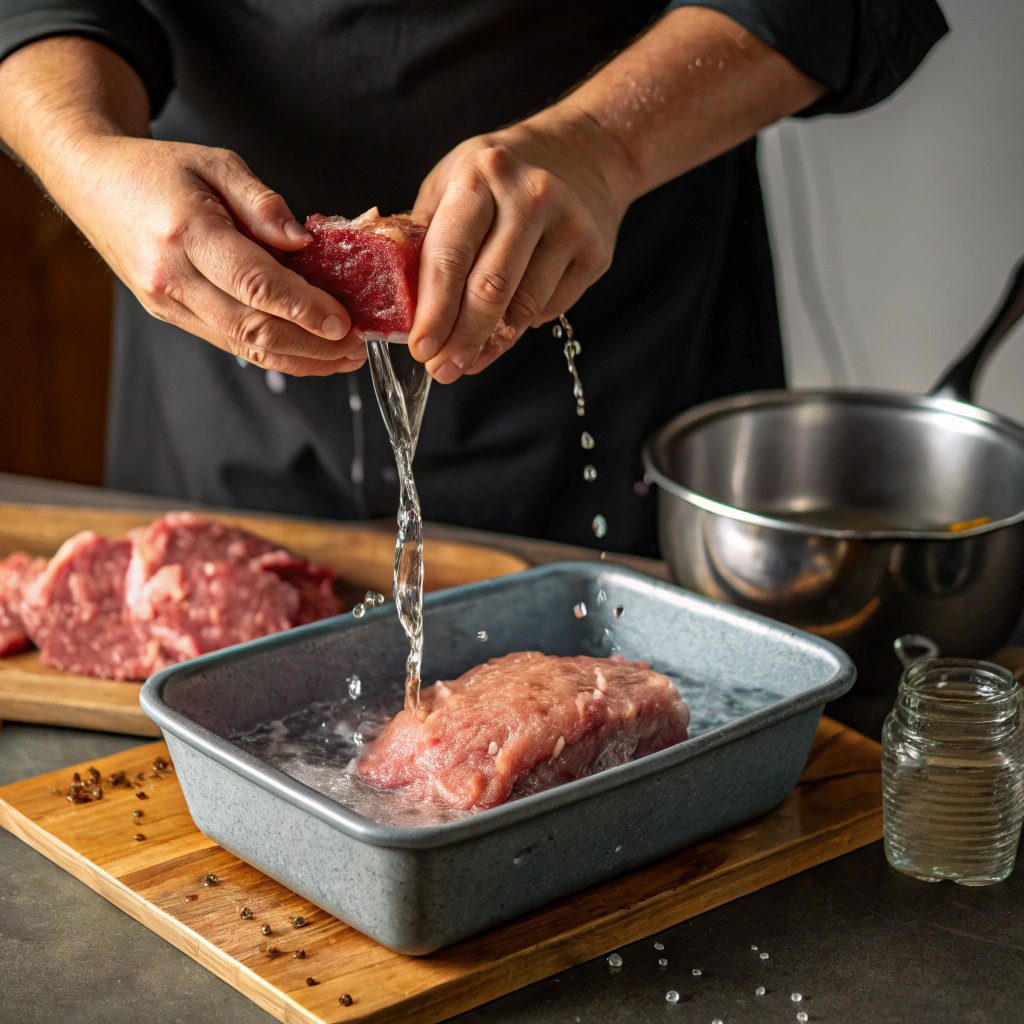
Signs Your Meat Has Thawed Safely
Here’s a question I get all the time: “”How do I know when my meat is properly defrosted?”” Well, after defrosting meat countless times, I’ve got some foolproof checks for you. First, press the thickest part – it should give slightly and feel cool but not ice-cold. Check for any ice crystals in the center; if you find any, it needs more time. The meat should be flexible but not mushy. Color-wise, look for even tones without any dark spots. And please, don’t do what my neighbor did – partially cooking frozen meat is a big no-no! When in doubt, give it more fridge time.
Quick Methods to Defrost Meat When Time is Short
Cold Water Thawing Technique
When you need to defrost meat quickly but safely, the cold water method is my go-to solution. Place your frozen meat in a leak-proof plastic bag and submerge it completely in cold tap water. The trick is to change the water every 30 minutes to maintain the right temperature. Small cuts like chicken breasts typically thaw in about an hour, while larger items may need 2-3 hours. I’ve found this method particularly useful when I forget to defrost meat overnight.
For best results, make sure to cook the meat immediately after thawing. This technique works great for sealed packages too – just make sure there aren’t any tears in the packaging. Remember to keep the water cold throughout the process. I like to set a timer on my phone as a reminder to change the water regularly.
Microwave Defrosting Guidelines
Using your microwave to defrost meat requires careful attention to avoid partially cooking the edges. Start by removing all packaging and placing the meat on a microwave-safe plate. Most modern microwaves have a defrost setting – use it! I’ve learned to defrost in short intervals, checking frequently and rotating the meat for even thawing. For ground meat, break up larger chunks as they begin to soften.
Keep in mind that microwaved meat needs to be cooked right away. This prevents any bacteria from multiplying in warm spots. When defrosting chicken, I always make sure to clean the microwave afterward. Pro tip: place a paper towel under the meat to catch any drips and make cleanup easier.
Emergency Speed-Thawing Tricks
Sometimes you need creative solutions to defrost meat super quickly. One of my favorite tricks is using metal surfaces – they conduct heat faster than plastic or glass. Place your wrapped meat on an aluminum baking sheet or between two metal pots. The metal helps transfer room temperature heat more efficiently. Never use hot water or leave meat on the counter unattended.
Another helpful tip is to slice partially frozen meat – it’s actually easier to cut when slightly frozen! Just remember that any quick-thaw method means you’ll need to cook the meat immediately. When I’m really in a pinch, I combine methods: start with cold water, then finish in the microwave carefully.
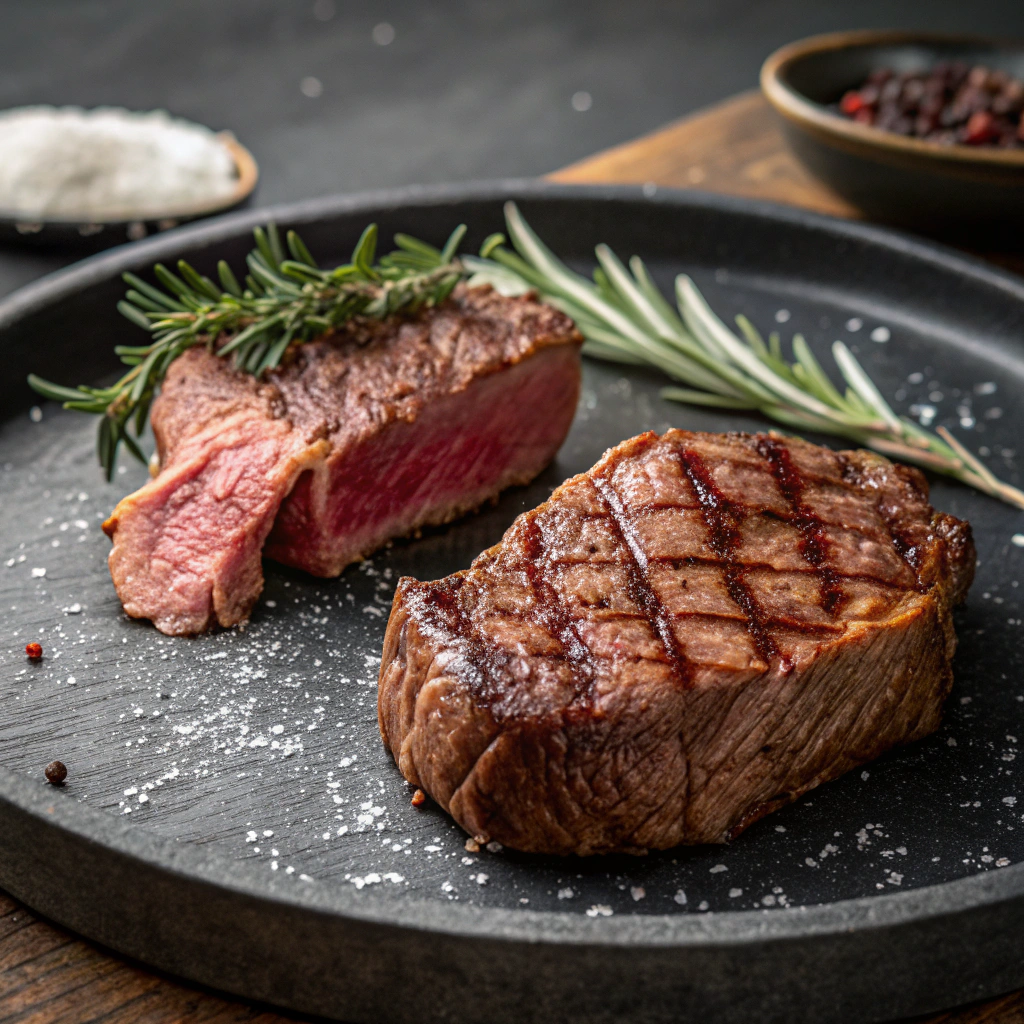
Planning Ahead: Best Ways to Defrost Different Meats
Refrigerator Thawing Timetable
The safest way to defrost meat is in your refrigerator, giving it plenty of time to thaw gradually. For best results, place frozen meat on the bottom shelf to prevent drips from contaminating other foods. A good rule of thumb: allow about 24 hours for every 4-5 pounds of meat. When I plan to defrost meat this way, I always use a rimmed plate or container to catch any juices.
Keep in mind that refrigerator-thawed meat stays safe for a few days, unlike other methods. Large roasts or turkeys might need several days to thaw completely. I like to start my weekend meal prep by moving frozen meats to the fridge on Thursday or Friday, ensuring they’re ready when I need them.
How to Defrost Large Cuts vs Small Pieces
Different cuts of meat require different approaches when it comes to thawing. Large roasts and whole chickens need more time and careful attention during the defrost process. I’ve found that breaking down larger cuts into smaller portions before freezing makes future thawing much easier. When defrosting meat in smaller pieces, they thaw more evenly and quickly.
For bulky items like pot roasts or turkey breasts, plan extra time in the refrigerator. Small pieces like chicken tenders or stir-fry strips thaw much faster. One trick I’ve learned is to freeze meat in portion-sized packages – this way, you only need to defrost what you’ll actually use, saving time and reducing waste.
Special Tips for Poultry and Fish
Poultry and fish require extra care when thawing due to their delicate nature and food safety concerns. When I defrost meat like chicken or fish, I always place them in a sealed container on the lowest shelf of the fridge. Fish typically thaws faster than poultry, usually requiring only overnight refrigeration. For thin fillets, the cold water method works particularly well.
Always pat seafood dry after thawing to ensure proper cooking. With chicken, I make sure there’s no ice remaining in the cavity if it’s whole. For the best results when preparing chicken, check out this delicious chicken casserole recipe that’s perfect for your thawed poultry. A helpful tip: if you’re planning to marinate your poultry, you can actually add the marinade while it’s still partially frozen – it’ll be ready to cook once fully thawed!
Common Meat Defrosting Mistakes to Avoid
Why Counter Thawing is Dangerous
Let me tell you why leaving meat on the counter to defrost is a huge no-no! The “danger zone” between 40°F and 140°F is where bacteria love to party, and your kitchen counter hits that sweet spot. When you defrost meat at room temperature, the outer layers warm up way faster than the inside, creating the perfect breeding ground for harmful bacteria.
I learned this the hard way when I got food poisoning from a steak I’d left out too long. Now I always plan ahead to defrost meat safely in the fridge. Even if you’re in a rush, it’s better to use cold water methods than risk making your family sick. Trust me, proper thawing techniques are worth the extra time!
Hot Water Method Risks
I know it’s tempting to speed up defrosting meat by running it under hot water or dunking it in a hot bath, but this is super risky! The hot water method can partially cook the outer layers while the center stays frozen, leading to uneven cooking and potential bacterial growth. When you defrost meat improperly, you’re not just risking food safety – you’re also compromising texture and flavor. I’ve seen countless home cooks make this mistake, ending up with tough, chewy meat that’s unevenly cooked. The outer portions can become dry and rubbery while the inside remains icy. Instead, stick to cold water if you need a faster alternative to refrigerator thawing.
Refreezing Rules You Must Know
When it comes to defrosting meat and refreezing, there are some crucial guidelines to follow. You can safely refreeze meat only if you’ve thawed it in the refrigerator – never refreeze if you’ve used the cold water method or (yikes!) left it on the counter. I keep a kitchen thermometer handy to ensure my fridge stays at or below 40°F when defrosting meat for later use. Remember that each freeze-thaw cycle can affect quality, so try to plan your portions carefully. If you’re like me and buy in bulk, divide your meat into meal-sized portions before freezing to avoid unnecessary thawing and refreezing cycles.
Pro Tips for Perfect Meat Defrosting Results
Best Containers for Thawing Meat
Choosing the right container makes a huge difference when defrosting meat safely. I always use leak-proof containers with raised bottoms to keep meat from sitting in its juices. A good trick is placing your wrapped meat on a wire rack inside a rimmed baking sheet – this allows air circulation while catching any drips. When I defrost meat in the fridge, I keep it on the bottom shelf to prevent cross-contamination. Glass containers with tight-fitting lids are my go-to choice since they’re easy to clean and won’t retain odors. For smaller cuts, I love using shallow containers that help maintain even temperature distribution throughout the thawing process.
How to Speed Up Safe Defrosting
Need to defrost meat quickly without compromising safety? Here’s my favorite trick: seal your meat in a leak-proof bag and submerge it in cold water, changing the water every 30 minutes. This method helps defrost meat evenly while keeping it at a safe temperature. For faster results, I sometimes place a heavy plate on top to keep the meat fully submerged. Another tip is to spread ground meat into a thinner layer before freezing – it’ll defrost much quicker! Remember to keep the water cold; even slightly warm water can encourage bacterial growth. I always set a timer to remind me to change the water regularly.
Maintaining Meat Quality While Thawing
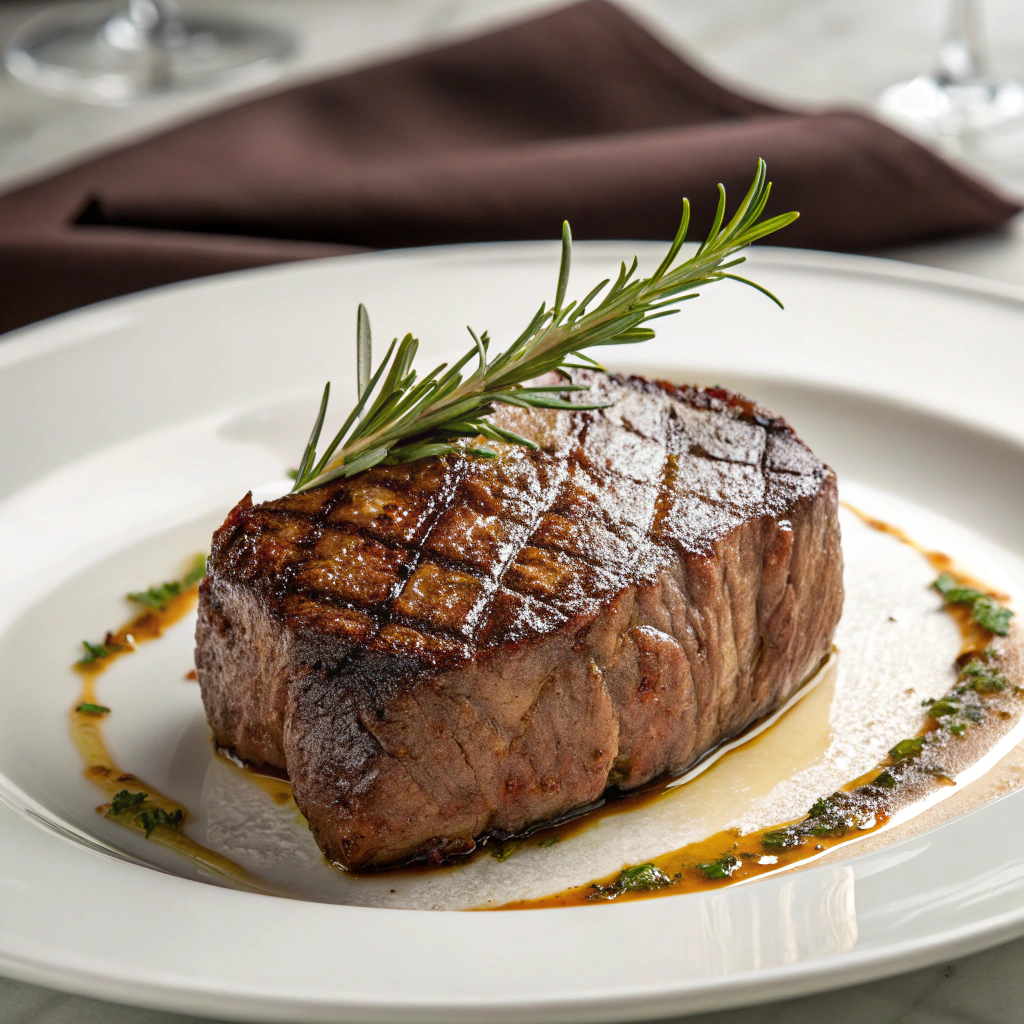
The way you defrost meat can significantly impact its final taste and texture. I’ve found that gradually thawing in the fridge helps maintain those precious meat juices that make your dishes extra flavorful. When defrosting meat, keep it in its original packaging or wrap it tightly in plastic to prevent freezer burn and oxidation. I place a paper towel under the package to absorb any moisture that might accumulate. For expensive cuts, I’m extra careful to maintain a consistent temperature throughout the thawing process. This patience pays off in the final dish, giving you juicier, more tender results that your family will love.
Start Defrosting Like a Pro Today
Ready to put these tips into practice? Start with one simple change: plan your thawing schedule. Move tomorrow’s dinner from freezer to fridge tonight. Try the cold water method when you’re short on time. Share your defrosting wins (and fails!) in the comments below – we all learn from each other’s kitchen adventures. Remember, good cooking starts with safe preparation. Let’s hear how these methods work in your kitchen!


